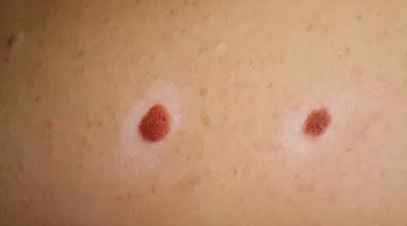Congenital or infantile melanoma is an extremely rare form of melanoma that occurs in infants at birth or in very young children. It is a rare type of melanoma and may be the result of transplacental metastatic dissemination from a mother with melanoma or, alternatively, may arise from the degeneration of a medium-sized or giant congenital nevus.

Only 6 cases of transplacental melanoma have been described and, sadly, none of these survived for long, with 40% of cases dying within 18 months of diagnosis. The most common sites of presentation of congenital or infantile melanoma are the head and neck.
Initially, congenital melanoma was thought to result solely from congenital melanocytic nevi (pigmented birth spots), which can be present at birth in about 1 percent of newborns. However, more recent studies suggest that some cases of congenital melanoma can develop independently of a congenital melanocytic nevus.
Diagnosing congenital melanoma can be difficult, as these lesions can resemble other benign skin conditions in newborns. Consequently, it is essential to consult a dermatologist if such lesions are noticed in an infant or very young child.
Other factors that may predispose to the development of congenital melanoma include xeroderma pigmentosum, neurocutaneous melanosis and immunosuppression.
Treatment of congenital melanoma usually involves surgical removal of the lesion. If the melanoma has spread to other organs, additional treatments, such as chemotherapy, immunotherapy, or radiation therapy, may be needed.
Despite the rarity of congenital melanoma, it is important to note that the five-year survival rate for children with melanoma is generally better than for adults, possibly due to differences in the biological behavior of pediatric melanoma versus the adult form of the disease.